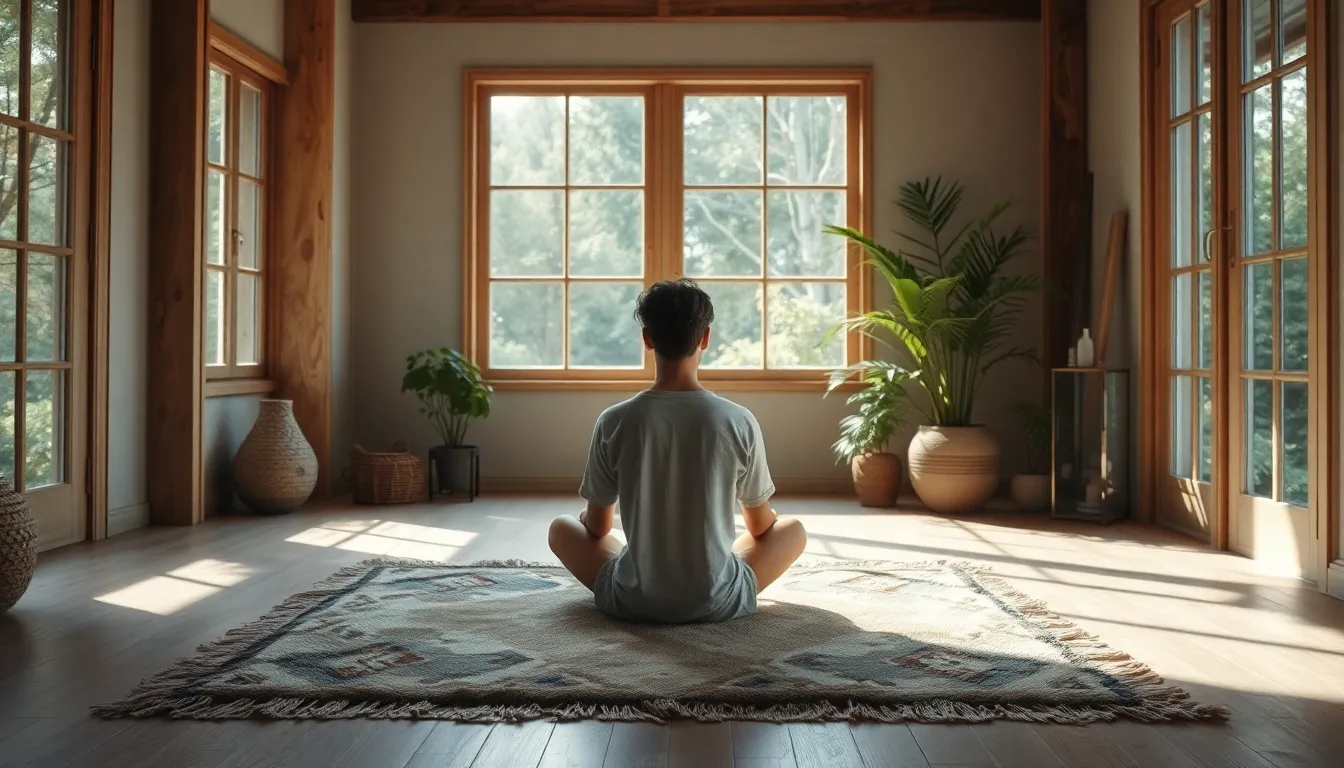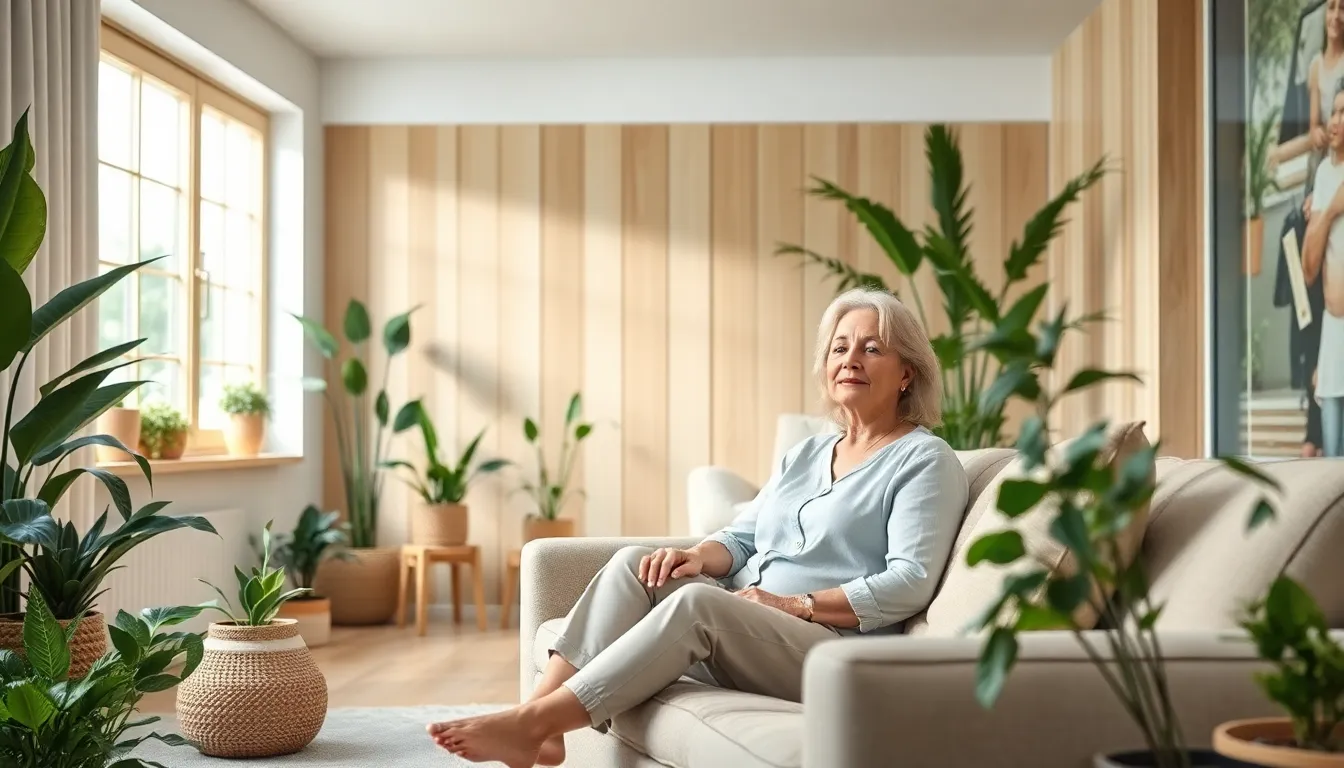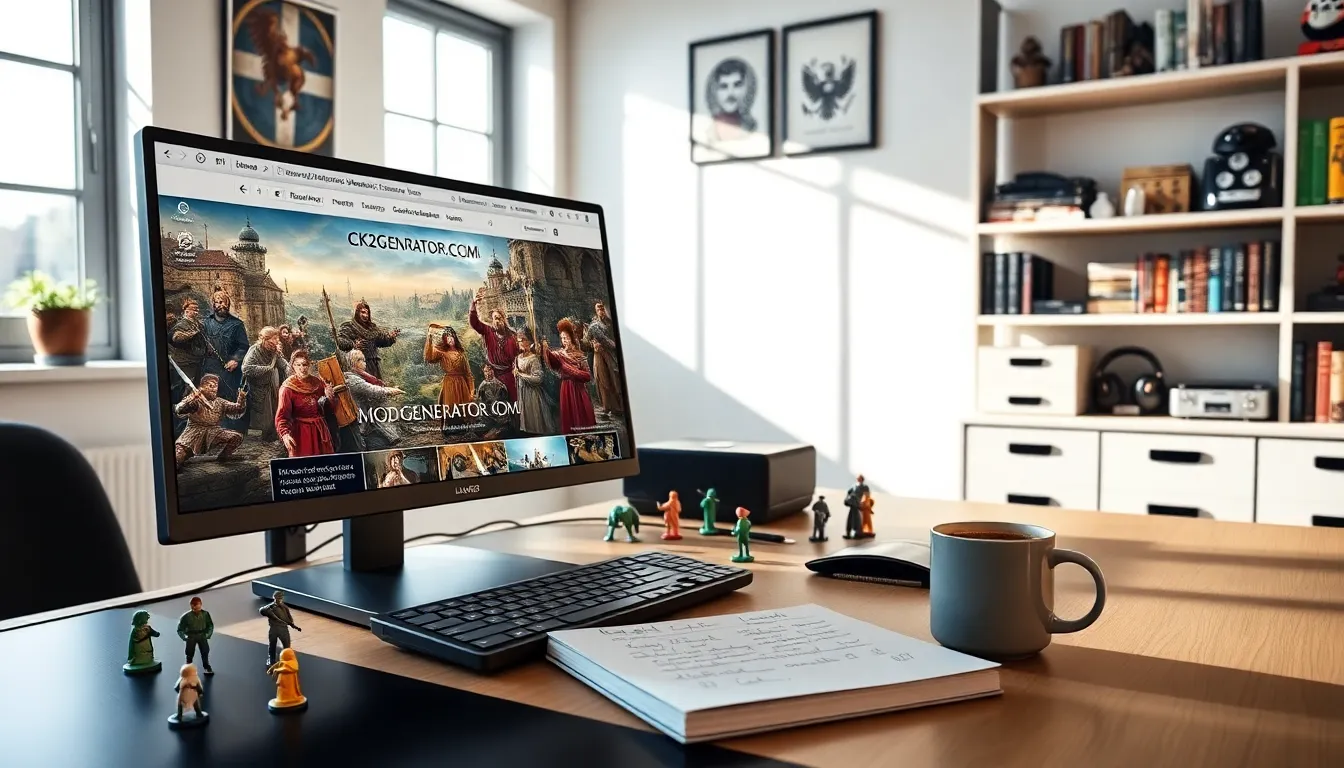In a world buzzing with notifications and endless to-do lists, calm design emerges as a breath of fresh air. Imagine a space where your mind can unwind, where every element whispers serenity instead of shouting for attention. It’s not just about aesthetics; it’s about creating an oasis that nurtures peace in our chaotic lives.
Table of Contents
ToggleUnderstanding Calm Design
Calm design fosters serene environments, encouraging relaxation in an often chaotic world. This approach aims to minimize overwhelming sensory stimuli through thoughtful design choices.
Definition of Calm Design
Calm design prioritizes simplicity and tranquility in visual and spatial elements. It seeks to create environments that promote mental well-being. Features include a soft color palette, natural materials, and uncluttered spaces. These aspects enhance focus and relaxation. Calm design aligns with users’ needs, ensuring functionality without excess.
History and Evolution
Calm design traces its roots back to the mid-20th century, gaining prominence from minimalist movements. Designers began emphasizing quiet spaces to counterbalance the rapidly changing world. Developing in tandem with the rise of wellness and mindfulness, this concept grew alongside societal shifts toward mental health awareness. Many designers now integrate technology to create calming digital experiences, reflecting the ongoing evolution of this essential design philosophy.
Principles of Calm Design

Calm design emphasizes key principles that create serene and peaceful environments. Designers prioritize simplicity, user-centric focus, and the use of natural elements.
Simplicity and Minimalism
Simplicity serves as a cornerstone of calm design. Uncluttered spaces promote mental clarity and relaxation. Minimalism fosters a sense of calm by reducing visual noise, which distracts from daily tasks. Designers often utilize soft color palettes and geometric shapes to enhance tranquility. The absence of unnecessary decor creates an environment where individuals can focus and unwind.
User-Centric Focus
User-centric focus ensures designs cater to individual needs and comfort. This approach emphasizes creating spaces that prioritize user experience over aesthetics. Thoughtful design choices enhance accessibility and promote well-being. Designers consider flow and usability, ensuring that every element serves a purpose. When users feel comfortable in their environment, they experience increased peace and satisfaction.
Use of Natural Elements
Using natural elements fosters a connection to the outdoors. Incorporating materials like wood, stone, and plants enhances the calming effect of a space. Such elements draw on the restorative qualities of nature, promoting relaxation. Incorporating natural light further contributes to a sense of well-being. Combining these elements with mindful design creates a harmonious environment that supports mental health.
Benefits of Calm Design
Calm design offers numerous advantages that enhance both physical and mental environments. It prioritizes user comfort and well-being through thoughtful, serene elements.
Enhanced User Experience
Enhanced user experience emerges from spaces designed with tranquility in mind. Clear pathways and uncluttered areas allow individuals to navigate easily. Natural light improves mood and creates a welcoming atmosphere. Carefully selected textures and colors promote relaxation, inviting users to linger and engage with their surroundings. A focus on user needs fosters a sense of belonging, making the experience more enjoyable and fulfilling.
Reduced Cognitive Load
Reduced cognitive load plays a key role in the benefits of calm design. Simplified layouts minimize distractions, allowing users to focus better on tasks. Less visual clutter leads to quicker decision-making, supported by an organized environment. Natural materials encourage a soothing atmosphere that further alleviates stress. By creating spaces that prioritize tranquility, mental clarity increases, enhancing overall productivity and well-being.
Increased Satisfaction
Increased satisfaction results from users feeling more at peace in serene environments. Purposeful design encourages emotional connections, making interactions more meaningful. Comfortable spaces reduce anxiety, allowing for deeper relaxation. Consistent use of calming elements fosters a sense of safety and contentment. Ultimately, a thoughtful approach to calm design leads to enhanced happiness and improved quality of life.
Applications of Calm Design
Calm design finds application across various domains, enhancing environments and experiences in meaningful ways.
Digital Products and Interfaces
Calm design plays a crucial role in creating digital products. Intuitive navigation simplifies user interactions, allowing individuals to focus on tasks without distraction. Soft color palettes and minimalistic layouts contribute to a serene browsing experience. Designers often incorporate ample white space, reducing visual clutter and fatigue. Responsive designs ensure smooth transitions, enhancing overall usability. By prioritizing user comfort, these elements promote a sense of tranquility while engaging with technology.
Physical Spaces
Physical spaces greatly benefit from calm design principles. Tranquil environments foster relaxation and productivity in homes and workplaces. Natural light often serves as a key element, bringing warmth and vitality indoors. Utilizing soft textures and natural materials creates a comforting atmosphere that encourages well-being. Thoughtful spatial arrangements promote easier movement and flow, reducing stress. Users often report heightened satisfaction in peaceful surroundings, as these spaces nurture mental clarity and emotional stability.
Branding and Marketing
Branding and marketing strategies increasingly adopt calm design methods. Clear messaging combined with minimalist visuals resonates with consumers seeking simplicity. Brands emphasize authentic connections through serene imagery and straightforward narratives. Fostering a calming presence in advertisements helps establish trust and loyalty. Companies that prioritize calm design often see increased engagement, as consumers feel more at ease with their messages. These approaches demonstrate a commitment to understanding audience needs, leading to long-lasting relationships.
Challenges in Implementing Calm Design
Developing a calm design presents several challenges that can hinder its effective implementation. Successful application requires careful consideration of various factors.
Misinterpretations and Misapplications
Misinterpretations of calm design can lead to shallow implementations that miss the core objective. Some designers mistake minimalism for calmness and overlook other essential elements like emotional connection. Misapplications may result in sterile environments that lack warmth and comfort. Designers may also neglect user needs, creating spaces that do not resonate with individuals seeking tranquility. Clarity in understanding calm design principles is crucial for creating genuine peaceful environments.
Balancing Aesthetics and Functionality
Balancing aesthetics and functionality poses a significant challenge in calm design. A beautiful design might not serve its intended purpose if it sacrifices usability. Designers often face pressure to create visually stunning spaces that embrace calmness while ensuring they remain practical. Those navigating this landscape must find harmony between visual appeal and user experience. Prioritizing function without compromising serenity requires thoughtful planning and innovative solutions.
Calm design stands as a vital response to the chaos of modern life. By prioritizing simplicity and tranquility, it transforms environments into sanctuaries that nurture mental well-being. The thoughtful integration of natural elements and user-centric principles fosters spaces that invite relaxation and focus.
As designers embrace this philosophy, they create not just visually appealing spaces but also meaningful experiences that resonate deeply with users. The journey toward implementing calm design may have its challenges, but the rewards are significant. A commitment to genuine tranquility can lead to enriched lives and stronger connections in both physical and digital realms. Embracing calm design is more than a trend; it’s a necessary evolution toward a more peaceful existence.





